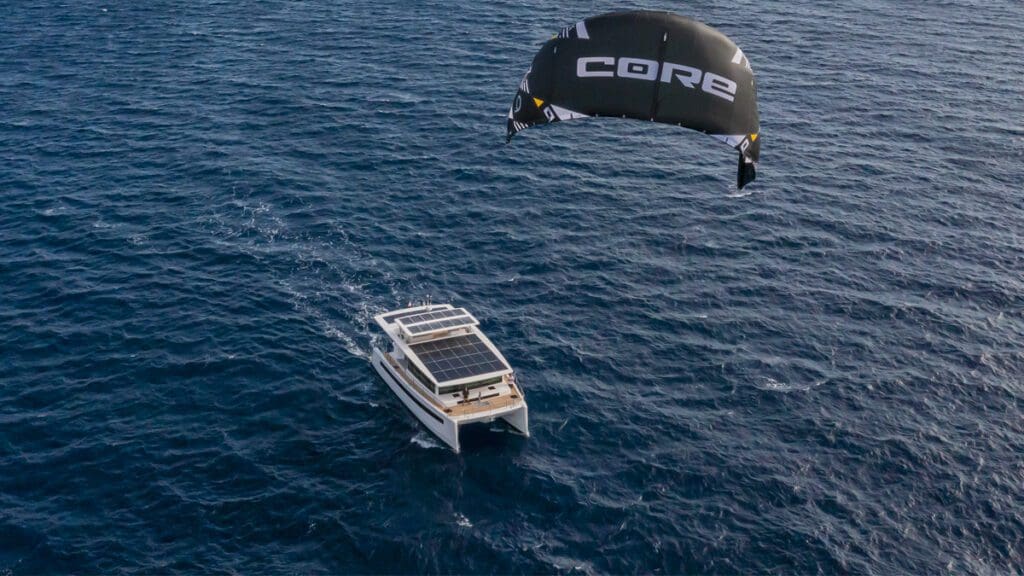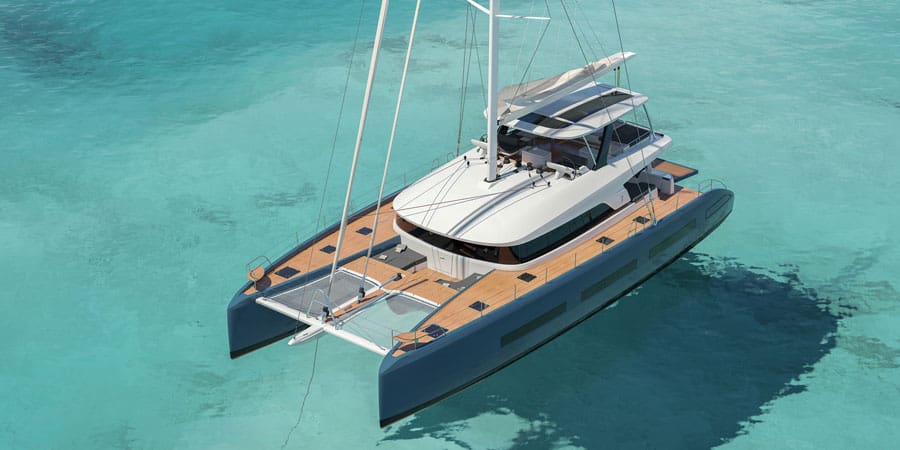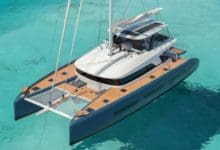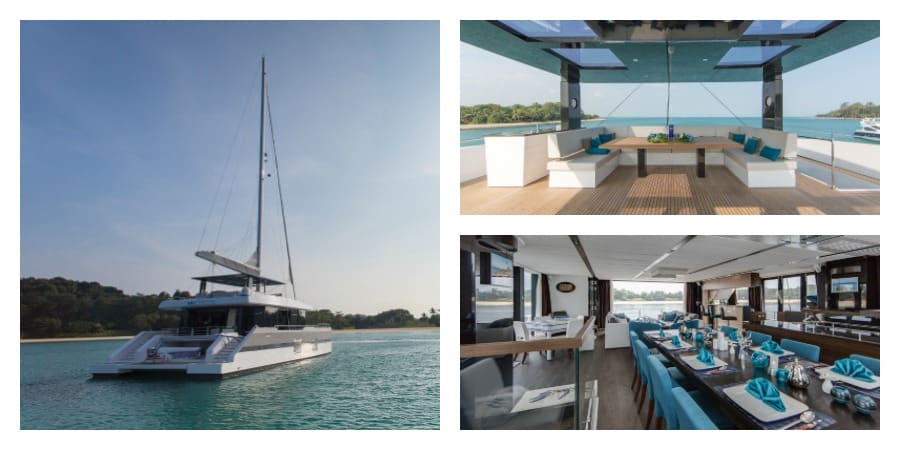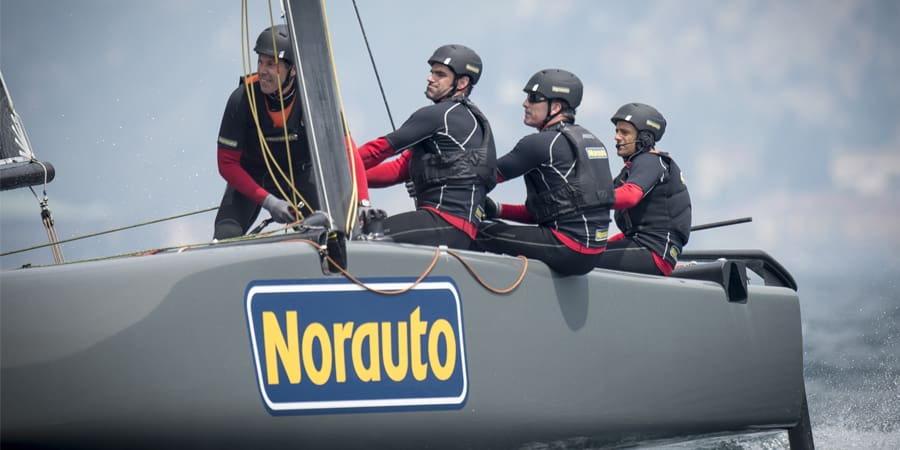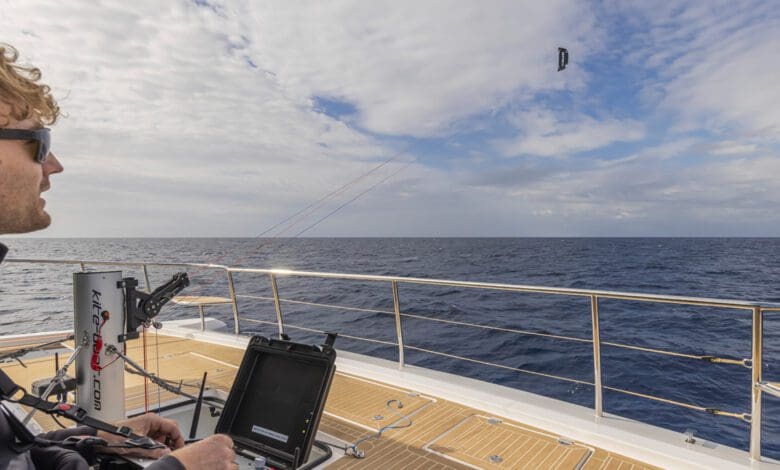
Do you remember the new Silent 60? This solar-powered catamaran carries 42 solar panels for 17 kWp of solar energy to power two electric motors of up to 2x340kw. Backed up by a battery capacity of up to 286 kWh, the yacht can cruise efficiently with zero emissions solely on solar power for up to 100 nautical miles a day for weeks.
To further improve its green credentials and range, for longer crossings the first SILENT 60 is also fitted with a compact 9 or 13-sqm kite wing. The kite wing is optionally available on all SILENT models.
How the kite wing works
A dedicated storage locker under the foredeck houses the kite wing and all its components, including an electric winch and a short, collapsible mast. On the first unit, the mast is connected by four shrouds to pad eyes on deck that distributes the forces through the hull structure, but on subsequent deliveries (8 units with the kite wing option have been ordered to date) the mast will be mounted on a baseplate inside the locker to leave the foredeck clutter-free.
After inflating the kite, it is released overboard to drift away on the surface of the water. Pulling on the lines launches it into the air and once it reaches the optimal flight height, it begins to trace a figure “8” in the sky and generates power to pull the yacht.
If you want to stop kiting, the automated app controls move the kite to a position right above the boat where it has the least pull on the line. From here it can be winched down electrically and collapsed over the foredeck ready for stowage.
A big advantage of a kite compared to a conventional sail is, that the kite flies in much higher altitudes and therefore gets more steady and stronger winds up there. Therefore, it can already be used at low wind speeds of less than 10 knots, when it would not make any sense to hoist a sail on a sailing boat of comparable size.

